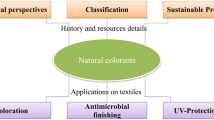Abstract
In the present study, the analytical strengths and limitations of near-infrared (NIR) spectroscopy to non-invasively characterize organic components in painting materials have been investigated. In spite of the increased amount of information available today from advanced modern analytical instrumentations dedicated to cultural heritage, the non-invasive identification of materials belonging to the wide class of organic compounds historically used in paintings is still a challenging task. Near-infrared spectroscopy offers several attractive features that make this technique particularly suitable to this purpose. In fact, it is non-invasive, allows for non-contact measurements in reflectance mode, gives molecular information on complex macromolecules, and can be performed on-site by means of portable devices. First-derivative transformation of reflectance spectroscopic data has been applied to provide a simple and fast way to deduce more information from NIR spectra. This approach has allowed spectral features to be identified that can be useful to distinguish different compounds belonging to the classes of lipids, proteins, and resins. To this purpose, at first, a spectral database of pure standard has been collected. Our analytical approach was then successfully validated on pictorial models reproducing the typical stratigraphy of an easel painting. As final step, the study of a real painting has been attempted and a drying oil, animal glue, and a terpenic natural resin, as well as an earth pigment were clearly identified, as cross-validated by GC-MS analysis.











Similar content being viewed by others
References
Siesler HW, Ozaki Y, Kawata S, Heise HM (2002) In: Near-infrared spectroscopy: principles, instruments, application. Wiley
Blanco M, Coello J, Iturriaga H, Maspoch S, de la Pezuela C (1998) Analyst 123:135R–150R
Cruz Sarraguça M, Almeida Lopez J (2009) Vibrational Spectroscopy 49:204–210
Reid LM, O’Donnell CP, Downey G (2006) Trends Food Sci Technol 17:344–353
Karoui R, de Baerdemaeker J (2007) Food Chem 102:621–640
Lachenal G (1995) Vibrational Spetroscopy 9:93–100
Bacci M, Chiari R, Porcinai S, Radicati B (1997) Chemometr Intell Lab Syst 39:115–121
Lichtblau D, Strlič M, Trafela T, Kolar J, Anders M (2008) Applied Physics A 92(1):191–195
Jurado-Lopez A, de Castro MD Luque (2004) Anal Bioanal Chem 380:706–711
Trafela T, Strli M, Kolar J, Lichtblau DA, Anders M, Pucko Mencigar D, Pihlar B (2007) Anal Chem 79:6319–6323
Dumitrescu OR, Baker DC, Foster GM, Evans KE (2005) Polym Test 24:367–375
Jiang B, Dong Huang Y (2007) Int J Mol Sci 8(6):541–552
Savitzky A, Golay M (1964) Anal Chem 36(8):1627–1639
Andreotti A, Bonaduce I, Colombini MP, Gautier G, Modugno F, Ribechini E (2006) Anal Chem 78:4490–4500
Christy AA, Kasemsumran S, Du Y, Ozaki Y (2004) Anal Sci 20:935–940
Workman J, Weyer Jr L (2007) In: Practical guide to interpretative near-infrared spectroscopy. CRC
Manzano E, Navas N, Checa-Moreno R, Rodriguez-Simón L, Capitán-Vallvey LF (2009) Talanta 77:1724–1731
Dietemann P, Higgitt C, Kälin M, Edelmann MJ, Knochenmuss R, Zenobi R (2009) J Cult Herit 10:30–40
Boyatzis S, Ioakimoglou E, Argitis P (2002) J Appl Polym Sci 84:936–949
Doménech-Carbó MT, Kuckova S, de la Cruz-Cañizares J, Osete-Cortina L (2006) J Chromatogr 1121:248–258
Bacci M (2000) In: Ciliberto E, Spoto G (eds) Modern analytical methods in art and archaeology. Wiley, New York, pp 321–361
Bacci M, Magrini D, Picollo M, Vervat M (2009) J Cult Herit 10:275–280
Frost RL, Reddy BJ, Wain DL, Martens WN (2007) Spectrochimica Acta part A 66:1075–1081
Colombini MP, Modugno F (2004) J Sep Sci 27:147–160
Acknowledgments
The financial support provided by Eu-ARTECH (contract RII3-CT-2004-506171), a project of the Sixth FP of the European Union within the program of Research Infrastructure, is acknowledged. The authors are also grateful to COO.BE.C (Cooperativa Beni Culturali) of Spoleto, Italy.
Author information
Authors and Affiliations
Corresponding author
Rights and permissions
About this article
Cite this article
Vagnini, M., Miliani, C., Cartechini, L. et al. FT-NIR spectroscopy for non-invasive identification of natural polymers and resins in easel paintings. Anal Bioanal Chem 395, 2107–2118 (2009). https://doi.org/10.1007/s00216-009-3145-6
Received:
Revised:
Accepted:
Published:
Issue Date:
DOI: https://doi.org/10.1007/s00216-009-3145-6




